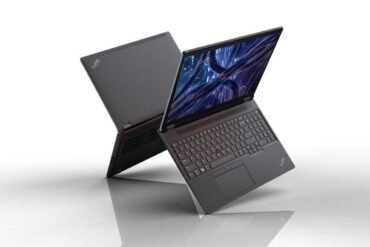The Art of Cable Management: Aesthetics and Airflow
Table of Contents
Introduction: The Importance of Cable Management
When it comes to building a sleek and functional workstation or gaming setup, cable management often takes a backseat. However, neglecting proper cable management can lead to a messy and disorganized workspace, affecting both aesthetics and airflow. In this article, we will explore the importance of cable management and how it can significantly improve the overall look and performance of your setup.
Firstly, cable management plays a crucial role in maintaining a visually appealing workspace. A tangle of wires and cables can create a cluttered and chaotic atmosphere, detracting from the overall aesthetic of your setup. By organizing and concealing cables, you can achieve a cleaner and more professional look. Not only does this create a visually pleasing environment, but it also allows you to focus better on your work or enjoy your gaming sessions without distractions.
Besides aesthetics, proper cable management also has a direct impact on airflow. When cables are tangled and obstructive, they can impede the flow of air within your system. This can lead to increased temperatures and reduced cooling efficiency, potentially causing overheating issues and performance degradation. By organizing and routing cables in an orderly manner, you can ensure proper airflow, promoting optimal cooling and preventing potential hardware issues.
To effectively manage your cables, there are various techniques and tools available. Cable ties, velcro straps, cable clips, and cable sleeves are just a few examples of accessories that can help you achieve a clean and organized setup. Additionally, using cable management solutions such as cable trays or raceways can provide a dedicated space to hide and route cables, further enhancing the overall look and functionality of your workspace.
Proper cable management is not just a matter of aesthetics; it is a practical necessity. By investing time and effort into organizing your cables, you can create a visually appealing and efficient setup. Not only will this improve the overall look of your workstation or gaming area, but it will also enhance airflow, prevent potential hardware issues, and ultimately contribute to a better working or gaming experience.
Organizing Cables for Maximum Efficiency
When it comes to cable management, efficiency is key. Properly organizing your cables not only enhances the aesthetics of your workspace but also improves airflow, reducing the risk of overheating and allowing for optimal performance. Here are some tips to help you organize your cables for maximum efficiency:
- Label and categorize: Start by labeling each cable to identify its purpose. Categorize them based on their function or location. This will help you easily identify and manage cables when needed.
- Use cable ties or Velcro straps: Gather cables that are running in the same direction and secure them using cable ties or Velcro straps. This not only prevents tangling but also makes it easier to trace or add/remove cables in the future.
- Invest in cable management products: There are various cable management products available, such as cable clips, sleeves, and cable trays. These products help keep cables organized and prevent them from becoming a tangled mess.
- Utilize cable routing options: Take advantage of cable routing options provided by your desk or workstation. Use built-in cable channels or routing holes to guide cables neatly and keep them out of sight.
- Consider cable length: Avoid using excessively long cables as they can create unnecessary clutter. Use cables of appropriate lengths to minimize the amount of excess cable that needs to be managed.
- Elevate cables: Elevate cables off the floor using cable clips or adhesive hooks. This prevents them from getting tangled or damaged and makes cleaning easier.
By implementing these cable management techniques, you can achieve a clean and efficient workspace. Remember to regularly check and reorganize cables, especially when adding or removing devices, to maintain optimal cable management. Not only will this improve the aesthetics and airflow of your workspace, but it will also make troubleshooting and maintenance much easier in the long run.
Cable Management Solutions: From Velcro Straps to Cable Raceways
Proper cable management is essential for maintaining a clean and organized workspace while also ensuring optimal airflow and reducing the risk of electrical hazards. Fortunately, there are various cable management solutions available, ranging from simple Velcro straps to more advanced cable raceways.
Here are some popular cable management solutions:
- Velcro Straps: Velcro straps are versatile and easy to use. They allow you to bundle cables together neatly, preventing tangles and minimizing clutter. Velcro straps are adjustable and reusable, making them a cost-effective choice for both home and office setups.
- Cable Clips: Cable clips are small adhesive or screw-mounted holders that keep cables in place. They can be attached to walls, desks, or other surfaces to guide cables along a specific path. Cable clips are particularly useful for managing thinner cables such as USB or audio cables.
- Cable Sleeves: Cable sleeves are flexible tubes that encase multiple cables, providing a clean and streamlined appearance. Sleeves are available in various sizes and colors, allowing you to match them with your existing decor. They are easy to install and can be cut to desired lengths.
- Cable Ties: Cable ties, also known as zip ties, are a popular choice for securing and bundling cables tightly. They are inexpensive and come in different sizes, colors, and strengths. Cable ties are one-time-use fasteners, so they may not be the best option if you frequently need to add or remove cables.
- Cable Raceways: Cable raceways are more advanced cable management solutions that offer a dedicated channel for routing and concealing cables. They are typically made of plastic or metal and can be mounted on walls or beneath desks. Cable raceways provide a professional and organized look, especially in larger setups with multiple cables.
Choosing the right cable management solution depends on your specific needs and preferences. It’s important to consider factors such as the number and type of cables, the desired aesthetics, and the level of accessibility required.
Remember, effective cable management not only enhances the appearance of your workspace but also improves airflow, reduces the risk of tripping hazards, and simplifies future cable maintenance or upgrades.
Enhancing Aesthetics: Concealing Cables for a Clean Setup
One often overlooked aspect of cable management is the visual appeal it brings to your setup. A clutter of cables can be distracting and disrupt the overall aesthetics of your space. Fortunately, concealing cables is a simple yet effective way to create a clean and polished look. Here are some tips to help you achieve a visually appealing cable management setup:
- Use cable management solutions: There are various cable management solutions available in the market that can help you hide and organize your cables. Cable sleeves, cable raceways, and cable clips are some popular options. These solutions allow you to route your cables neatly along walls, desks, or behind furniture, keeping them out of sight.
- Utilize cable management accessories: Cable ties and Velcro straps are essential tools for tidying up cables. These accessories allow you to bundle and secure multiple cables together, reducing the mess and preventing them from tangling. Additionally, using color-coded ties can help distinguish different types of cables, making it easier to identify and manage them.
- Opt for wireless alternatives: Whenever possible, consider replacing wired devices with wireless alternatives. Wireless keyboards, mice, speakers, and even charging pads eliminate the need for visible cables, contributing to a cleaner and more streamlined setup.
- Hide cables behind furniture: If your setup includes a desk or a TV stand, make use of the available space behind them to hide cables. You can use adhesive cable clips or cable raceways to secure the cables along the edges or backside of the furniture, keeping them concealed from view.
- Invest in cable management furniture: Some furniture pieces are specifically designed with cable management in mind. Desks with built-in cable management features, such as cable trays or grommets, can help you easily route cables out of sight, creating a more organized and visually pleasing workspace.
Remember, a neat and tidy cable management setup not only enhances the aesthetics of your space but also offers practical benefits. It makes it easier to identify and access specific cables, reduces the risk of tripping hazards, and improves airflow by eliminating cable clutter. So, take the time to conceal and organize your cables, and enjoy a clean and visually appealing setup.
Improving Airflow: Cable Management for Better Cooling
When it comes to optimizing your computer’s cooling performance, cable management is often overlooked. However, proper cable management not only enhances the aesthetics of your setup but also plays a crucial role in improving airflow. Here are some tips to help you achieve better cooling through effective cable management:
- Organize and route cables: Start by organizing your cables and routing them in a neat and orderly manner. Use cable ties, Velcro straps, or cable management sleeves to keep them together and prevent them from obstructing airflow.
- Separate power and data cables: Power cables tend to generate more heat compared to data cables. To minimize the impact on airflow, separate power and data cables as much as possible. This can be done by routing them through different channels or using separate cable management solutions.
- Avoid blocking fans and vents: Ensure that cables are not obstructing any intake or exhaust fans, as this can impede airflow. Keep cables away from the front, rear, and top vents of your computer case to allow for unobstructed airflow.
- Use shorter cables: Excessively long cables can create unnecessary clutter and hinder airflow. When possible, opt for shorter cables that are just the right length for your specific setup. This not only improves cable management but also helps maintain a clean and organized look.
- Elevate cables off the floor: If your computer is placed on the floor, elevate cables to prevent them from collecting dust and obstructing airflow. Use cable clips or adhesive hooks to secure cables to the underside of your desk or other suitable surfaces.
- Consider modular power supplies: Modular power supplies allow you to connect only the cables you need, reducing cable clutter inside your case. This not only improves airflow but also makes cable management much easier.
By implementing these cable management techniques, you can significantly enhance the airflow within your computer case. This helps keep your components cool, which in turn can lead to improved performance, increased longevity, and reduced noise levels. So, take the time to tidy up your cables and reap the benefits of better cooling for your system.

























